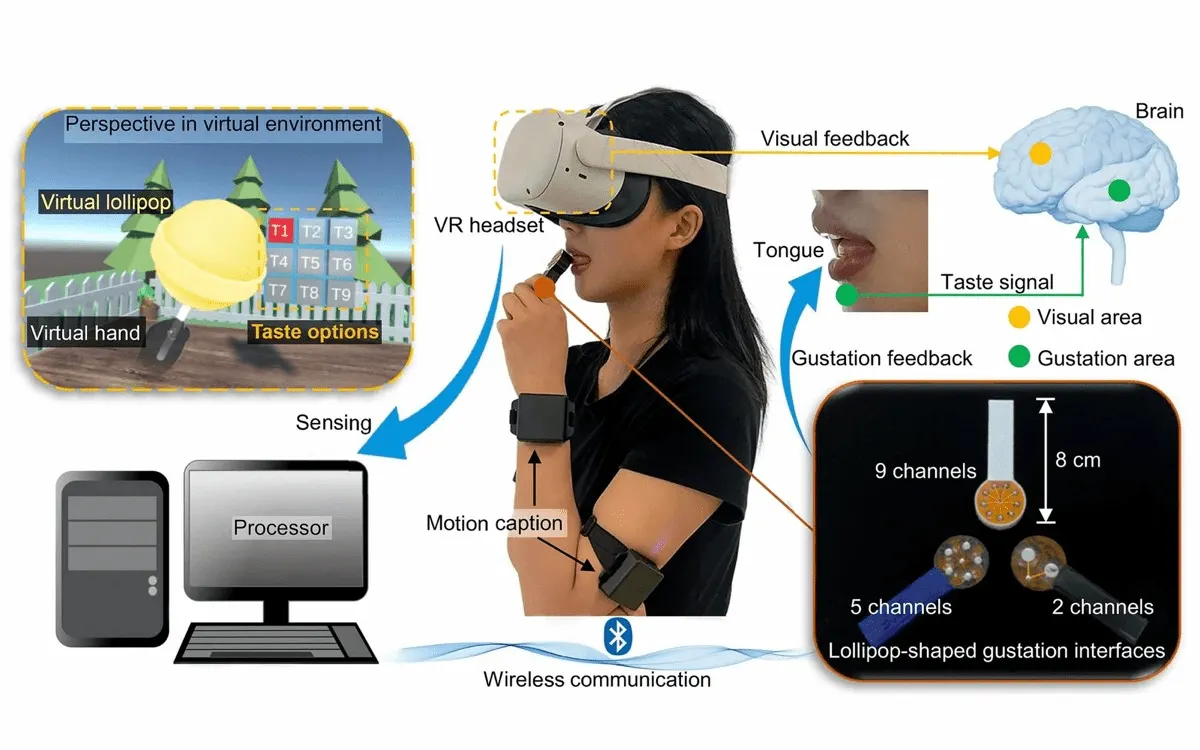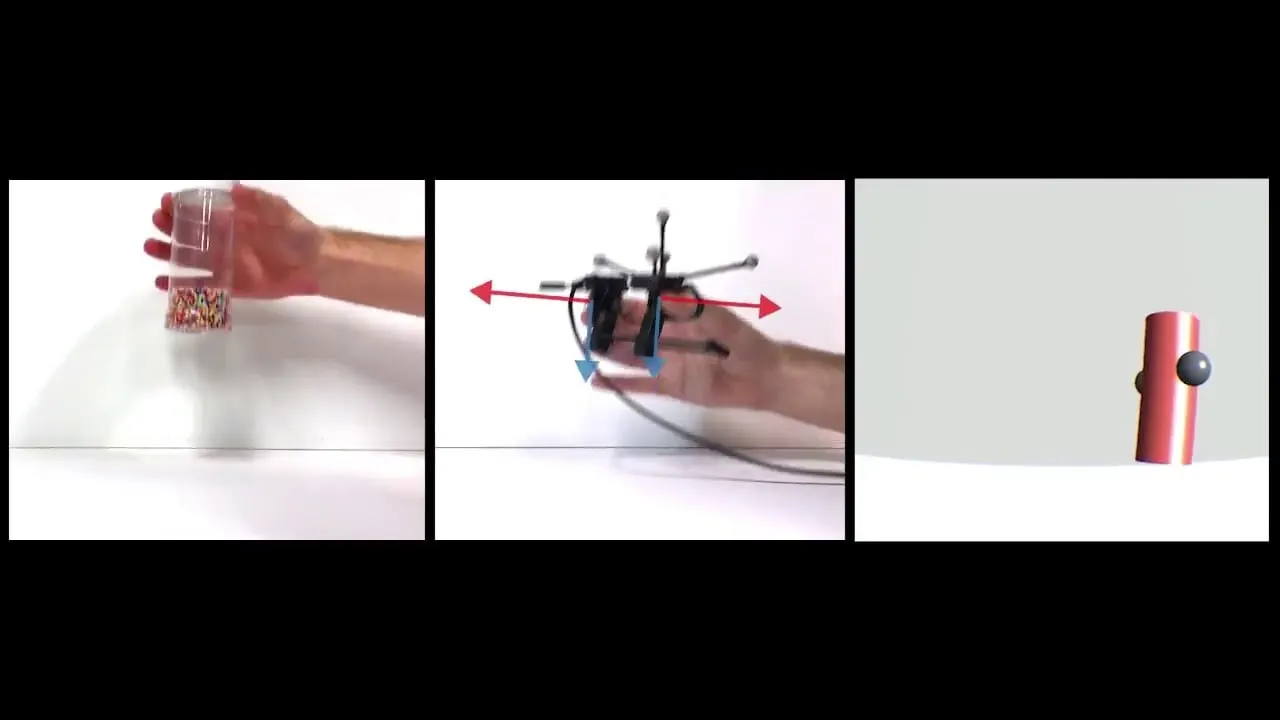Now you can taste things in the metaverse—if that’s your thing.
Scientists at the City University of Hong Kong created a gadget that looks like a lollipop, but does something far more interesting—it makes virtual reality tasteable.
The device, detailed in a study published in the Proceedings of the National Academy of Sciences, uses a process called iontophoresis to transport flavor-inducing ions through “agarose hydrogels.”
\When users lick the device, their saliva is mixed with food-grade chemicals to produce up to nine distinct flavors: sugar, salt, citric acid, cherry, passion fruit, green tea, milk, durian, and grapefruit. The flavor is enhanced by the stimulation of olfactory sensations.
“To realize both gustation and olfaction feedbacks in [the] metaverse, an olfaction interface based on 7-channel odor generators is also introduced into the gustation interface system,” the research team wrote. The device worked across virtual, augmented, and mixed reality environments.
The electrical current running through the system stayed under 2 volts—well below the 30-volt human safety threshold for electrical shock.

The engineering feat packed an impressive amount of tech into its tiny 15-gram frame—matching the weight of a Tootsie Pop. Using ultra-thin printed circuit boards and a 3D-printed nylon casing, the team squeezed a lithium-ion battery, microcontroller, and Bluetooth module into an 8x3x1 cm body. Motion sensors paired the lollipop’s location in virtual and physical worlds, creating seamless integration between action and taste.
Users are also able to adjust flavor intensity by tweaking the voltage.
Each set of flavor-producing gel lasts about an hour before depletion. The team plans to potentially offer up to 100 different taste sensations in future iterations. The scientists noted that beyond the current one-hour gel lifespan limitation, they also still needed to work on the smell delivery system.
More than meets the eye in VR
The Hong Kong team’s creation joined a growing field of devices trying to digitize human senses. Other labs developed equally inventive approaches—mainly focusing on tact.
Researchers, for example, created origami-inspired haptic devices that simulated textures through folding structures controlled by tiny motors. The system adjusted folding angles to make virtual surfaces feel as hard as concrete or as soft as grass.
A wireless haptic interface combines mechanical, electrotactile, and thermal feedback to recreate sensations of roughness, slipperiness, and temperature changes. Users could potentially feel the texture of virtual objects, or experience simulated environmental conditions.
The “Grabity” glove uses vibrotactile feedback to simulate weight and stiffness when manipulating virtual objects. Meanwhile, the xTouch system bypasses gloves entirely, using transcutaneous electrical nerve stimulation at the wrist to evoke tactile sensations in the hand.
There’s even a study that details how scientists directly stimulated the brain to make people feel things—without the need of additional hardware like gloves.

In the field of pure medical research, a team of scientists showed that precisely synchronized visual, auditory, and proprioceptive cues can activate the brain’s somatosensory cortex to create the illusion of phantom touch in VR.
These findings may contribute to therapeutic approaches for conditions like phantom limb pain using VR. But there’s definitely some recreational use, as well, which could make the still-niche VR a global phenomenon, bringing people together and sharing immersive experiences.
Just remember—if in the future you decide to share a VR experience with your friend, ask before you lick.
Edited by Andrew Hayward
GG Newsletter
Get the latest web3 gaming news, hear directly from gaming studios and influencers covering the space, and receive power-ups from our partners.
https://decrypt.co/305274/scientists-lickable-device-taste-things-vr








